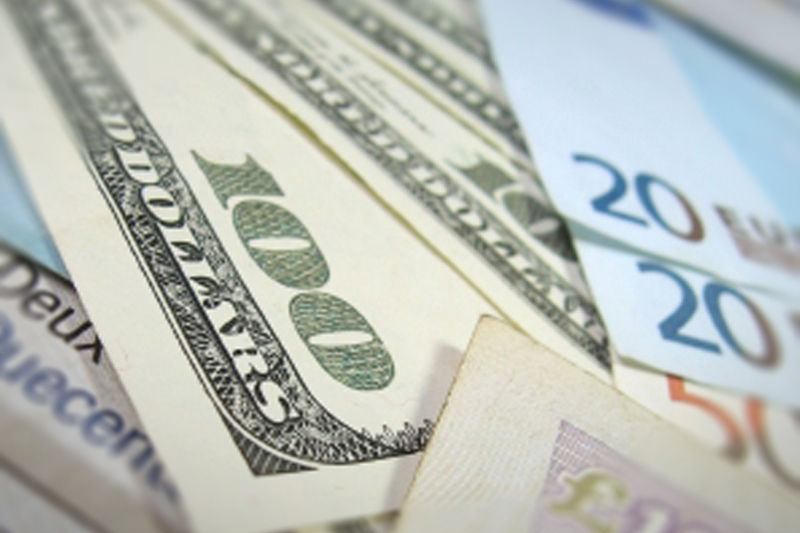Investing.com -- EUR/USD ended Friday's session virtually flat in spite of a soft U.S. monthly jobs report that pushed back market expectations for the Federal Reserve's next interest rate beyond the first half of 2016.
The currency pair traded in a broad range between 1.1387 and 1.1480, before settling at 1.1404, down 0.0001 or 0.01% on the session. With the miniscule losses, the euro fell for the fourth straight session against the dollar, continuing its pullback from 9-month highs in Tuesday's session when it eclipsed 1.16 for the first time since August. Over the last month, the euro is up fractionally against its American counterpart by 0.18%.
EUR/USD likely gained support at 1.0538, the low from December 3 and was met with resistance at 1.1713, the high from Aug. 24.
On Friday morning, the U.S. Department of Labor's Bureau of Labor Statistics (BLS) said domestic nonfarm payrolls in April increased by 160,000, considerably below a downwardly revised gain of 209,000 in March and the lowest monthly total since last September. Analysts expected to see an increase of 200,000, in line with March's three-month average of 202,000. The losses were concentrated in mining, government and retail, partially offset by improved conditions in the Professional and Business Services industry.
The unemployment rate, meanwhile, remained unchanged at 5%, slightly above consensus forecasts for a 0.1% decline to 4.9%. In January, the unemployment rate in the U.S. fell to its lowest level in eight years. The U-6 unemployment rate, which also measures workers that are marginally attached to the labor market, fell 0.1 to 9.7%, sharply below last April's rate of 10.4%. By comparison, the Fed's preferred gauge of U.S. unemployment, peaked at 18% in 2010 at the end of the Financial Crisis.
Meanwhile, average hourly wages increased by 0.3% last month, in line with consensus estimates. The Labor Force Participation Rate fell by 0.2% to 62.8%, while the average workweek stayed unchanged at 34.5 hours per week.
While the Fed has voiced concern with the sluggish pace of inflation over the last several months, the U.S. central bank had expressed optimism with the broad improvement in the labor market prior to Friday's report.
In April, the FOMC said in its monetary policy statement that it will take a data-driven approach with the timing of its next interest rate hike. The FOMC's benchmark Federal Funds Rate has remained at its current level between 0.25 and 0.50% at each of the Fed's three meetings this year. In December, the Fed ended a seven-year zero interest rate policy by approving its first rate hike in nearly a decade.
Although three top Wall Street firms lowered their expectations for the pace of the Fed's current tightening cycle, there were other indications on Friday that the U.S. central bank could leave a June rate hike on the table. In an interview with the New York Times following the jobs release, New York Fed president William Dudley said he is still reasonably confident that the Fed could raise rates as much as twice year.
Elsewhere, Retail PMI in the euro area slumped 1.3 points to 47.9, considerably below consensus' expectations for a 49.6 reading. Yields on the U.S. 10-Year rose three basis points to 1.73%, while yields on the Germany 10-Year gained three basis points to 0.14%. It came one day after the benchmark for global bond yields fell to 1.287%, percentage points from hitting all-time lows, according to Bloomberg.
The U.S. Dollar Index, which measures the strength of the greenback versus a basket of six other major currencies, fell more than 0.20% to an intraday low of 93.22, before rallying in the afternoon session to settle at 93.83, up 0.10% on the day. The index continues to hover near 9-month lows.
